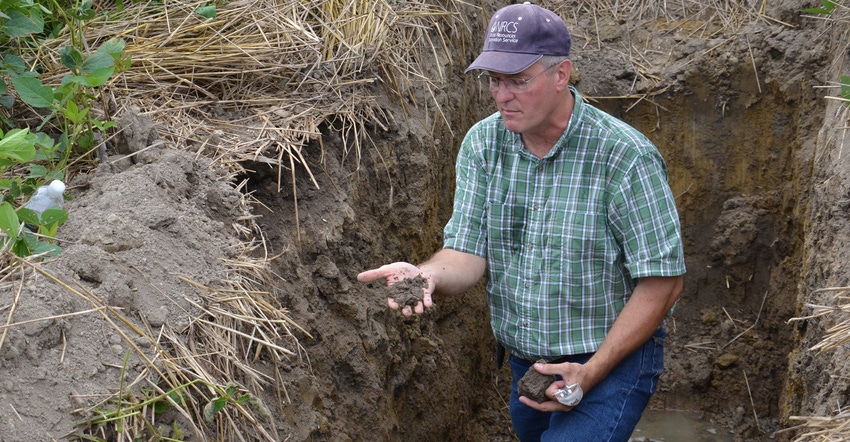
If you work with a soils consultant and rolled your eyes when he or she suggested digging a pit in one of your fields during the season to check on such things as soil compaction and root depth, you might want to reconsider. Some farmers who have dug those pits report they’ve learned valuable information. Sometimes they’re even helpful in convincing other people you work with that what you’re doing is working.
Mike Starkey has dug pits at various times for field days or just to learn. Usually, Starkey, who has no-tilled both corn and soybeans for over 20 years and included cover crops for 15 years, hopes to illustrate such things as deep root channels from cover crops and earthworm channels.
He vividly recalls digging a pit in one of his cornfields in 2012, during the historic drought. He was more than a decade into continuous no-till and several years into cover crops at the time.
“We wanted to see how deep our roots were going at the peak of the drought,” he recalls. “We discovered that they were still finding moisture. In fact, within hours of digging the 4-foot-deep pit, water was seeping into the bottom of the pit.”
“We conserved moisture because of residue on the surface, and our corn roots found moisture deep in the soil,” he says. “Our corn still performed reasonably well that year, especially compared to fields in the area in other tillage systems.”
One reason Starkey recalls that pit is because he asked a prospective landlord who wasn’t excited about no-till to come take a look and bring his wife along. The pit must have been convincing. He no-tills their land today.
A second example
Starkey held a field day in August the following year and dug pits in soybeans. Barry Fisher with the Natural Resources Conservation Service agreed to examine the pits and show visitors what he found.
Fisher discovered roots going down several feet in the soil. It was also obvious that soil structure was beginning to change and improve.
Fisher examined pits in two different soil types at that particular field day. He saw more change in one pit than the other, and noted that sometimes it takes longer for some soils to improve after a shift in tillage systems than others. The lighter-textured soil was changing more slowly.
That was in 2013. Today, Starkey says his soil organic matter readings on soil test reports are routinely in range from 3% to 4%. Before he shifted tillage systems, they typically ran closer to 2% organic matter.
About the Author(s)
You May Also Like




